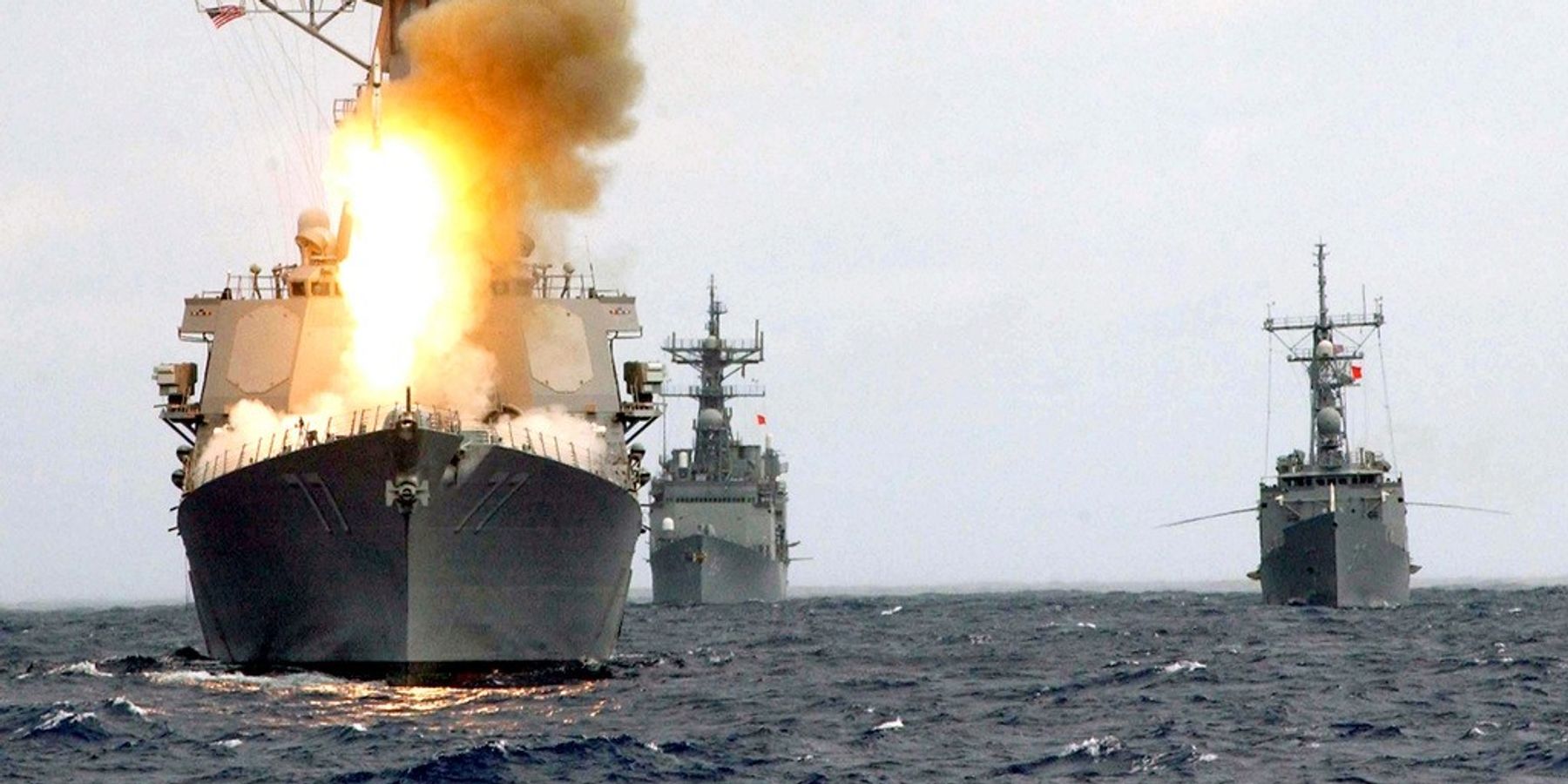The Pentagon is marshaling a new international task force to combat Houthi attacks in the Red Sea, and not a moment too soon, it would seem, as it has been expending millions of dollars in munitions to intercept the militants' drones and missiles since Oct. 7.
But is it essentially expanding the “target set” for the Houthis, who are clearly bent on proving their own strength (with, of course, Iranian backing) and scoring political points against Israel? Will this task force, named Operation Prosperity Guardian, bring the U.S. one step closer to a regional war that will, in the end, cost Americans much more?
According to the Department of Defense, the Houthis have conducted 100 drone and ballistic missile attacks since Oct. 7, targeting cargo vessels involving more than 35 flags from different nations in the Red Sea, including U.S Navy destroyers. Most have been intercepted, though some have hit their targets, causing minor injuries and damage. But with the hijacking of one ship, plus the major disruptions to shipping (the Houthis are blocking an estimated $10 billion in cargo a day) and resulting price hikes, the situation has put security in the region on high alert.
It is also costing the United States a pretty penny to act as the key defender of these predominant global shipping lanes. Each munition used to shoot down the Houthi missiles and drones costs between $1 million and $4.3 million and the ships cannot reload at sea and will have to return to port — perhaps Djibouti? — to reload if the kinetic activity goes on much longer, according to experts that talked to Responsible Statecraft this week.
According to experts, the US Carney and US Mason destroyers (also joined by U.K. warships in some cases) could be using a mix of RIM66 SM-2 and RIM66 SM-6 interceptors as well as ESSM Sea Sparrows to take down the drones. The Carney is outfitted with SM-3s as well, but it is not clear that they are being used. This is all part of a “layered defense” that deploys different interceptors depending on the threat. The missiles mentioned so far in numerous interception reports have been the SM-2 and the Sparrows.
According to the Missile Defense Advocacy Alliance (as of 2022), the SM-2 costs $2.1 million per unit; the SM-6 costs $4.3 million; and the ESSM Sea Sparrows costs $1.7 million. The destroyers are also fitted with the Rolling Airframe missile, which cost $905,000 in 2022. One source suggested, however, not to assume the high end of the cost, adding that the U.S. Navy was likely cleaning out their old stocks and not using the latest versions of these interceptors.
The Pentagon spent $12.3 billion on its missile defense programs in 2022 and $24.7 billion on its missiles and munitions. There is a lot in the stockpile. Plus the countries called into the new task force will have their own capabilities. They include, according to Secretary of Defense Lloyd Austin, the United Kingdom, Bahrain, Canada, France, Italy, Netherlands, Norway, Seychelles and Spain. Interestingly it does not include NATO ally Turkey, or Saudi Arabia (which of course is currently tied to a ceasefire in its own conflict with the Houthis in Yemen).
Maybe cost isn’t the most urgent concern, then. Others who have spoken to RS said the threat of escalation — that the U.S. is close to engaging in an all-out war in the Red Sea at a time when its energy and resources are stretched in Ukraine and in sending Israel everything it asks for in the Gaza conflict — is key right now. Our Navy fleets — and U.S. troops/sailors in the region — are in harm’s way, and it is important for the American people to assess if what happens next is truly in the national interest.
The Houthis have said they will target the ships and U.S. Navy in the Red Sea until Israel stops its bombardment of Palestinians in Gaza. If this video is any indication, the new Operation Prosperity Guardian is going to have its hands full, and millions more dollars in U.S. missile interceptors will be expended before this situation is resolved.
- US will take massive hit in global standing over Israel ›
- Houthi rivals in Yemen want to exploit Red Sea rift | Responsible Statecraft ›
- Attacks on Red Sea shipping pay dividends for Yemen’s Houthis | Responsible Statecraft ›
- Bahrain: the only Arabs to join US Red Sea task force | Responsible Statecraft ›
- US push to expand anti-Houthi coalition miffs allies | Responsible Statecraft ›
- Are Houthi attacks doing that much damage to the world economy? | Responsible Statecraft ›
- NATO member Turkey takes role of 'active neutrality' in Red Sea crisis | Responsible Statecraft ›
- In Red Sea, US Navy paying the price of shipbuilding failures | Responsible Statecraft ›
- The US military's anti-Houthi campaign still isn't working | Responsible Statecraft ›
- Why are we paying $2M each for these missiles? | Responsible Statecraft ›
- Is Trump poised to double down on Biden's Houthi failures? | Responsible Statecraft ›
















